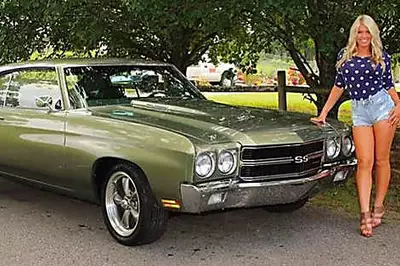https://en.showsnob.com/view/?id=real-photos-from-vietnam-war-sho&src=outbrain&utm_source=outbrain&utm_medium=0068ab6b88680e81559385788996d38334&utm_campaign=00989d592366c7d19fa5fe78eaea2851b7&utm_key=192&utm_content=00dbe759a5067fa7bd4dfd084ad8862e3e&utm_term=SHO_D_US_real-photos-from-vietnam-war-sho_nerreeg_w_chrome_289326275_dup_convatv160&guid=v4-5wRqsu5-1090478091&obc=0.125&omid=003deb9bd6de5c89e499a3173da8ae043f&dicbo=v4-5wRqsu5-1090478091&page=29
![[Photos] Photos That Show The Reality of the Vietnam War](https://images.outbrainimg.com/transform/v3/eyJpdSI6IjlmYzI5YmQ5NDRjNjlhZTRlMjUxNWQ3YzI0MWVhMzAxNDNmNjk4ZjM2OTQwNGEyNjVhN2MxMDEyMzM2NDc3NjUiLCJ3Ijo0NTAsImgiOjMwMCwiZCI6MS41LCJjcyI6MCwiZiI6NH0.webp)
These Photos Show the Real Vietnam War
The Vietnam War went on for 20 years, between 1955 and 1975, and was hugely controversial. It can even be said that it was one of the bloodiest wars in the history of wars the U.S. fought in. While the total number of deaths has never been fully confirmed, it’s estimated that somewhere between 2.5 and 3.5 million people died, soldiers and civilians alike. Out of those deaths, 60,000 were Americans.

What made the war so very controversial was the fact that it was a war fought by the United States against the Soviet Union, in an effort to stop communalism from spreading. It was a proxy war, and one that was part of the Cold War, but in the attempt to prevent Soviet politics from taking over, the U.S. ended up locked in a horrific battle that would go down in history as a bad idea. The following images have been hidden away for the most part and now they’re exposing the world to the reality of the Vietnam War. Are you ready for the truth?
An Injured Woman Guarded by a Weary Soldier
In this iconic image, an injured woman curls up on a makeshift bed, watched over by a rifle-wielding soldier. The scene behind them is impactful, with smoke rising and people fleeing. The woman lying there is obviously badly hurt, with bloodstained clothes and bandages around various body parts.

The soldier is what really draws your eye here. His face shows a wealth of experience he never wanted. You could say he’s determined or worried, but his watchful pose holds your attention. It’s obvious he’s seen things in the war.
Torrential Downpours
Any Vietnam-era soldier will tell you about the incredible rain in Vietnam, but this photo shows you exactly what it was like. These American soldiers fill their canteens from the water streaming off the jungle leaves. For many patrols, hiking through the sticky mud, soaked to the bone, was a daily routine in the rainy season.

During peak monsoon season, between August and October, it can rain nonstop for days. The mud is incredible and it’s easy to go a bit crazy when you are wet 24/7, with not a single bit of dry space to be found.
In this shot, soldiers from the South Vietnamese Army run toward the safety of the tree line. Fields were particularly dangerous because they were out in the open, easy targets for any snipers. The helicopters overhead provided cover.

The helicopters used machine-gun fire to overwhelm the Viet Cong that were hunkered down in the trees. When they took cover, the troops could run to cover and had a fighting chance. It was still a dangerous tactic.
The Makeshift OR
During any war, but especially the Vietnam War, there are no fully equipped hospitals in the field. When someone needs medical help, they have to make do with what they have on hand. This operating room was quickly assembled in a mangrove swamp on the Ca Mau Peninsula.

It was less than ideal for the injured patients, like this victim of a bomb dropped by the U.S. being carried to the room on a stretcher. The humidity, dirty water, and unsanitary conditions meant many wounded had little chance for survival.
Keeping the Troops Entertained
The soldiers were given some downtime and these periods were characterized with as much fun as possible, to help them forget the horrific things they’d seen and the loss of their fellow soldiers, as well as their own injuries and experiences. Concerts were particularly popular, including those performed by locals.

The “fun” had a unique side effect. Many American soldiers fathered children with local women and then either died or were sent home. Their children grew up without ever meeting their fathers and left an entire generation without a manly influence.
Rebuilding Vietnam with Orphans
The Vietnam war was devastating to Vietnam, affecting both North and South drastically. The country was left with destroyed cities, burned villages, and severely traumatized people. The end result was a terrible one and everything was essentially in chaos.

To help rehabilitate the country, orphans were sent via English coach to Sussex. There, at the Pestalozzi Children’s Village, they would receive 5-7 years of education before being sent back to Vietnam. The newly educated orphans would be part of the rebuilding of Vietnam.
Abandoned Military Uniforms
This image shows South Vietnamese Army uniforms abandoned on the road. The soldiers these belonged to were attempting to hide their identity from their enemies, by abandoning their uniforms. The sheer number of items left behind on the road is astounding.

Knowing that the North Vietnamese soldiers would torture and mistreat them, the soldiers were eager to strip themselves of any item that might possibly be used to identify them. Their urgency is obvious in the way everything is dropped right there in the middle of the road.
Utter Destruction
The United States Army’s strategy for dealing with the Viet Cong method fighting was to “search and destroy” where troops sought out Viet Cong. They referred to the enemy soldiers as Charlie and would send out patrols to search in the jungles of Vietnam.

As they patrolled, the troops had to watch for some very unpleasant booby traps. The enemy also set out land mines that were often very well hidden. The Viet Cong would also try to mix with the locals in the tiny villages, making it almost impossible to identify who was the enemy and who was a civilian.
Dropping Elephants
Elephants were extremely useful during the war, on both sides. They were used to carry ammo and any heavy supplies that needed to be moved around. The South Vietnamese also used them to get across deeper rivers and they were excellent animals for patrols, too.

You may have heard of the movie “Operation Dumbo Drop” with Ray Liotta and Danny Glover, made back in 1995. It was based on an actual military operation that was called “Operation Bathroom.” The U.S. Army Special Forces took two elephants and air-dropped them into a South Vietnamese village. It was definitely a unique endeavor.
Raquel Welch Entertains Soldiers
Raquel Welch headed to Vietnam in 1967, right at the height of her popularity. She was a big distraction for the troops and kept them from thinking about their difficult living conditions and the non-stop fighting, at least for a few hours.

This photo was taken at a massive event that occurred in Vietnam and was meant to entertain the troops. Bob Hope was also performing at the same event, but Raquel was definitely a hit, dancing with the soldiers and reminding them of what awaited at home.
Vietnamese Child Victims
Roughly 84,000 children were killed during the Vietnam War. Between the massive battles and bombings, including those that dispersed toxic chemical weapons, children were often the victims. They were some of the most vulnerable people caught in the crossfire and even those who survived were severely affected.

Apart from children who were killed as side effects of the battles, many were left orphans when their parents were killed. The kids had no one left to look after them and it was something that would affect the entire country in the future. On top of these issues, many children were used to serve as tiny soldiers by the Viet Cong and North Vietnamese Army.
Hippies On the Front Line
In the 1960s, the hippie movement was in full swing in the United States. They were very anti-war and often held peace protests to protest the war. Most hippies felt the U.S. had no good reason to be involved in the Vietnam War and wanted the military to pull out and leave the country alone.

Sadly, there was a compulsory draft in effect during the Vietnam War and even pacifists were drafted. They ended up fighting in a war that they were completely against. As you can see in this image, the soldier is wearing a peace sign necklace, indicating that he’s against the war.
Saved By the Hueys
Helicopters were a major part of the military tactics in Vietnam War and the Bell UH-1 Iroquois were particularly useful. They were called Huey by the troops and were used to scout fields and let on the ground soldiers know where the enemy was hiding.

In this image, you can see the troops on the ground, slowly moving toward the enemy. Without the cover and scouting done by the Hueys, many more U.S. soldiers would have died during the Vietnam War. They were a critical part of the war.
The Caring Hearts
Not everything about the war was bad. In this image, you can see a Lance Corporal U.S. soldier gallantly carrying an elderly Vietnamese lady to safety. The photo was taken in 1970 and shows that, despite some rumors, not all soldiers were involved in the destruction.

This senior citizen couldn’t keep up with the American patrol and the soldier chose to help her by carrying her as they went. For the elderly and those who were sick or weak, the war was particularly difficult.
Vietnamese Terrain Was the Worst Enemy
Soldiers who fought in the Vietnam War had far more than enemy soldiers to deal with. The endless rain during monsoon season, the constant mud, insects, heat, and humidity were almost worse than the war itself. It was virtually impossible to move through the thick jungle and even fields were dangerous and difficult to traverse.

In the Mekong Delta, shown here, there are around 800 species of reptiles and amphibians. Another 430 types of mammals inhabit the area and there are plenty of dangerous creatures. Soldiers had to deal with elephants, tigers, snakes, and deadly insects, too. It was a new, terrifying landscape that they struggled to adapt to.
The South Vietnamese Marines
The U.S. wasn’t fighting alone. They worked with South Vietnamese soldiers like the Marines shown in this image. In the middle of the sugarcane plantation, a Marine holds his wounded fellow soldier and waits for help. The South Vietnamese lost many of their own during the war.

It’s thought that around 250,000 South Vietnamese soldiers were killed during the war. This rose after 1973 when the U.S. and Australia both quit the war. The local troops were left to struggle on with minimal resources and this made it far more difficult for them.
Secret Activists in the Mangrove Swamps
The photo shown here is an extremely rare shot of female activists from the Vietnam War. They hid their identities with masks and held their gatherings in the mangroves of the Nam Can forest on the Mekong Delta. The group was extremely secret and very few photos exist of them.

The main reason behind wearing the masks was so that even other women in the group didn’t know who they were working with. If any of the activists were captured, they wouldn’t be able to betray anyone, no matter how much they were tortured. The photo was unique because it was nearly impossible to get images to the northern part of the country from the mangroves.
Mountain Tribes
This photo shows a group called Montagnard, or “people of the mountain” in French. These groups were Vietnamese ethnically and the U.S., as well as South Vietnam tried to recruit them to fight alongside the south. As a minority group, the Montagnard wasn’t originally part of the war.

The groups were tapped for potential soldiers and then taught unconventional fighting methods by the American Special Forces. This helped the U.S. Army as it fought throughout the country. This particular group lived in the Central Highlands of Vietnam.
Moving Through the Rice Fields
This image was taken in December of 1964. Rather than showing a holiday spirit, it gives a glimpse into the difficulties of crossing rice fields with an Eagle Flight helicopter providing cover. The South Vietnamese troops had to wade through waist-deep water to get to the trees.

Rice fields were a major part of the terrain in Vietnam and they were the site of many a bloody battle. They were also ideal places for deadly ambushes. Since the U.S. troops weren’t accustomed to this type of terrain, the Viet Cong took full advantage of everything the Mekong Delta had to offer and used it to defeat the soldiers.
A Little Humanity
Even in war, people are fighting people. In this image, a U.S. Marine helps a prisoner of war quench his thirst. Both sides had their stories of torture and unpleasant treatments of prisoners, but there were definitely times when they treated each other like the humans they were.

The prisoners shown here were from the North Vietnamese Army, captured during a patrol. They were returned to the base and identifying information about when and where they were found were put on their chests to keep things organized.
It’s the Little Things
Even in the gloom and doom of wartime, little things can cheer people up . . . like this adorable puppy found by an American soldier. It’s a moment of unexpected happiness as the little furball lightens the mood, even with a tank in the background. It just goes to show that even with the numbness to all the suffering, joy could still be found.

Interestingly enough, though there is no doubt that this image is of war, with the uniforms and tank, the expressions on the men’s faces would be just as at home on a farm. There are some things that transcend unpleasant surroundings and cuteness is one of those.
Interrogations
Captain Thach Quyen, from the South Vietnamese Army, interrogated this prisoner of war in 1965. The battalion commander used traditional tactics, including grabbing the prisoner’s arm as part of the process on Tanh Dinh Island.

That same year, the Viet Cong was becoming more influential in the villages and the North Vietnamese Army quickly boosted its numbers and added more supplies. In return, the United States increased the amount of aid and the number of troops sent to help the south.
Dealing with Losses
The Vietnam War was deadly and it meant losing a friend or companion on a regular basis. That didn’t mean the soldiers became accustomed to the pain, though. They mourned their friends and comrades when there was a break in the fighting.

Friendships were forged fast in the desperate circumstances. The fact that these men shared trauma and were together night and day for long treks into the jungle meant they were fast friends almost immediately. Many of the relationships that started under duress ended up being lifelong.
Destroyed Families
War has a terrible effect on families and the Vietnam War was no exception. Men joined the war effort to fight and women were left with their children, trying to avoid getting killed in the crossfire. This image shows a mother trying to get her children to safety over a deep river.

Many of the families that fled during the fighting and bombing were left homeless after the war. Some tried to make it to South East Asia by boat, but this created a humanitarian crisis there, which resulted in more problems. The people who attempted this crossing were called boat people.
An Enemy Confrontation
Photographers in the Vietnam War managed to get some impressive photos, but this one takes the cake. It shows Viet Cong soldiers coming up on thoroughly camouflaged soldiers from the South Vietnamese Army. They’re moving through rice fields in the Mekong Delta area.

The photo gives a good look at the camouflage used by the local soldiers that was particularly useful in the heavy vegetation of the area. With the bright light of day, however, they were badly exposed here and that’s why they were caught up by the Viet Cong.
Friendships Forged
When you fought alongside someone for a few battles, it quickly became a solid relationship. In this photo, a Marine Sergeant hurries to check on a wounded friend south of the demilitarized zone in 1966. The photograph captures the emotions felt by the two soldiers as they meet again after a battle.

The sergeant in the image is Jeremiah Purdie. Despite sustaining head injuries and toughing out the pain, he is still focused on helping his friend. The friend has his legs wounded and treated but lies in the filthy mud that was inescapable there.
Thanh Tri City
The Vietnamese enemies were working with outdated weapons and gear, but that didn’t stop them from giving the south and the U.S. military a run for their money. Here you can see the soldiers with target practice in Thanh Tri City.

The Viet Cong attacked Thanh Tri and killed a large number of people, including 25 guards. They then took every weapon they could find and burned several buildings to the ground. It was a brutal attack and one that won’t be forgotten.
Classic Aircraft
The A-1 Skyraider was a plane used to bomb areas during the Vietnam War. Skyraiders held just one person but were very valuable for dropping bombs as seen in this image, where 500-pound napalm bombs are being dropped on the Viet Cong. The U.S. Military had sent a number of its Skyraiders to the South Vietnamese to use.

The planes were actually considerably out of date, having been used during the Korean War, a good 10 years before the Vietnam War even started. Eventually, the plans were replaced with jets, but the older plans still served their purpose in the country.
Hiding in the Trenches
Here you can see the American military hiding in the trenches to avoid being shot or bombed. They are getting as low as possible and clinging to their helmets in hopes of making it through one more day in the war.

The Soviet Union and China were supplying weapons to the Viet Cong and Vietnam People’s Army. These weapons included everything from machine and submachine guns to rockets, RPGs, and tank artillery. The weapons made it far more difficult for the United States Army to advance.
Toughing It Out
War shows the true mettle of a man and this image shows a soldier bandaging his fellow soldier’s injury. The injured man is calmly smoking a cigarette and looking on. The difficult situations these men lived through made them tougher than ever.

While the Vietnam War turned boys into men and helped them become more resilient, it also caused long-term issues. The pain and horrors that they saw were enough to make them strong, but would also haunt them years later.
Feeling Homesick
Living in a confusing, unfamiliar country wasn’t easy and it wasn’t easy being surrounded by other men all the time, either. That meant a good magazine was worth its weight in gold during the few breaks they got. It let them blank out some of the horrors for a short time.

Magazines like this one were popular because most men hadn’t seen an American woman since they left home. Many had girlfriends or even wives at home and they were desperate to keep the memories alive.
Red Beach Landing
In 1965, President Lyndon Johnson sent two Marine battalions to land on Red Beach and that was the beginning of a huge increase in support from the U.S. military. They were determined to help the South Vietnamese Army against the Viet Cong.

Early on, the Marines just had to guard the Da Nang Air Base, but shortly after that, they were sent out to fight the Viet Cong and North Vietnamese Army. There was no escaping the battles when you were on Vietnamese soil.
Complete Devastation
Aerial bombings were a major part of the U.S. military methods of suppressing the North Vietnamese Army. The enemy also had planes, thanks to China and the Soviet Union. This resulted in heavy bombing throughout the country and massive destruction everywhere you went.

In this photo, you can see how devastating the war was. A destroyed village burns, completely destroyed. Anyone still living there is either dead or ran for safety. These were the people who ended up homeless after the war.
Napalm and Agent Orange
Both sides used chemical weapons at some point in the war, but the United States was definitely more active in this area. Napalm, developed during WWII, was used heavily throughout the Vietnam War, but one of the more devastating weapons was Agent Orange. It was originally meant to be a defoliant and herbicide.

Nearly 20 million gallons of Agent Orange were used all over Vietnam. Unfortunately, it was later discovered that it can actually damage DNA and the effects of that particular chemical weapon will be seen for many generations in the country.
Exhaustion Sets In
War is hard and the young men who fought in the Vietnam War were dealing with more than most. This photo shows the sheer exhaustion felt by this soldier, thanks to the physical labor, constant fear, and ongoing battles and trauma. There was no escape from this new world they were thrown into.

Even those who had joined up and were fit and ready were hard-pressed to manage the nonstop movement, unfamiliar terrain and climate, and the sleepless nights. Many of them died because of fatigue or exhaustion.
Searching for Weapons
The photo here shows a Vietnamese soldier working alongside an American one as they conduct a search for hidden weapons. The peace talks at that point were in place but were essentially useless. The year was 1970 and the soldiers were searching Xuan Thiue village for guns.

In 1970, President Nixon decided to weaken North Vietnamese forces by visiting Cambodia, which was now starting to be taken over by the Northern Vietnamese. The U.S. was shocked that their president would do such a thing, but he did anyway.
Public Executions
A prisoner of war, Viet Cong officer Nguyen Van Lem is paraded through the streets of Saigon by Southern troops. This was during the Tet Offensive and the enemy soldier had been captured on February 1st, 1968.

The photo of this same prisoner being shot right in the street became an icon for the Vietnam War. He was executed publicly by General Nguyen Loan, who served as the chief of police. The public execution was meant to make a statement and it really did.
War is Hell
For a soldier fighting in an intense war such as Vietnam, it’s probably no secret to those at home that living your life in a warzone, let alone fighting in the war itself, is anything but a walk in the park. This soldier just happened to verbalize his feelings about the war on his helmet.

No one wants to go risk their lives in a war, but for some, Vietnam wasn’t optional. For this soldier, he felt that “war is Hell”, and he likely wasn’t alone in that feeling.

![[Photos] These Historical Figures Lived Long Enough to Be Photographed [Photos] These Historical Figures Lived Long Enough to Be Photographed](https://images.outbrainimg.com/transform/v3/eyJpdSI6ImMzNzk2YjA3YTZjNmY3MGZmNTZjMDNlODQ2Zjc2NmYwYjgxYjZjNDhlZGY0NGMyMTFmZmQwYmEyODg0Njc2MWEiLCJ3Ijo0MDAsImgiOjI2NiwiZCI6MS4wLCJjcyI6MCwiZiI6NH0.webp)
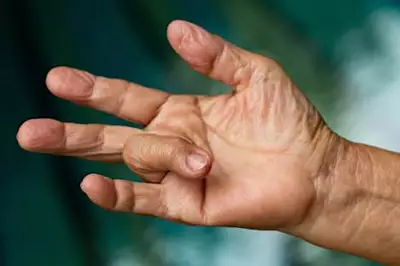
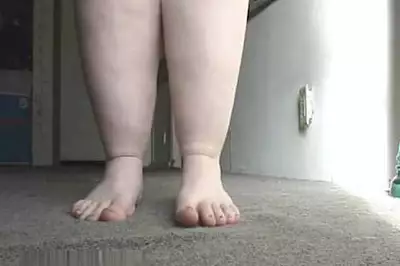


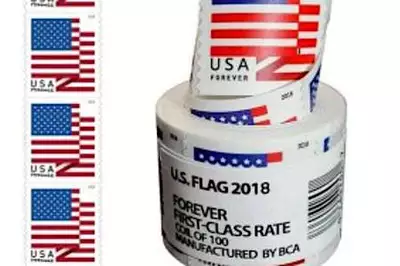
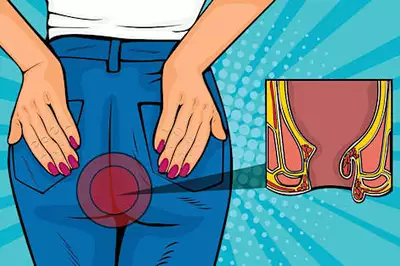


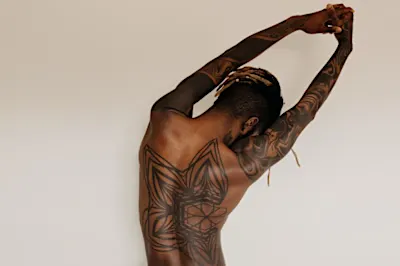
![[Photos] Remember Sherilyn Fenn? This Is Her Net Worth At 59 [Photos] Remember Sherilyn Fenn? This Is Her Net Worth At 59](https://images.outbrainimg.com/transform/v3/eyJpdSI6IjU4MDk1NjcyYTEwY2IyMjY0NDJjYjVkZGVkNDA0YzhlNDRmNmFjM2UzMjAzMDU1NDg1MDY5MzUyM2JhYTFlZjEiLCJ3Ijo0MDAsImgiOjI2NiwiZCI6MS4wLCJjcyI6MCwiZiI6NH0.webp)
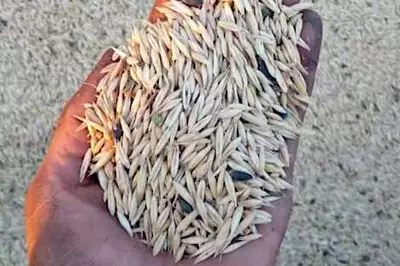
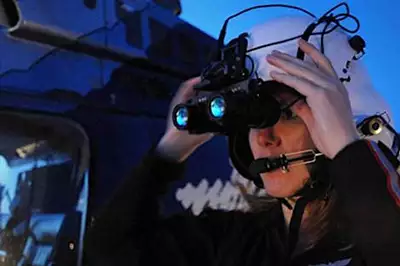

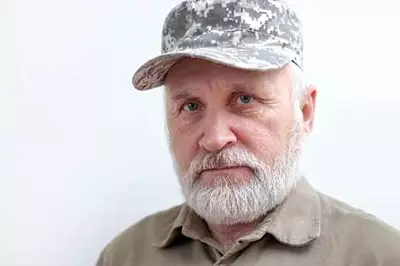
![[Photos] Cracker Barrel Is Closing The Following Locations [Photos] Cracker Barrel Is Closing The Following Locations](https://images.outbrainimg.com/transform/v3/eyJpdSI6IjJiOGIyYWNlMDQyYjE4NzllMGU0ZTEzN2Q5ODM5OWFjODFiY2VhMDg2NWRjMjBmMDkxZWYzZGEwODVmMjQ3ZGIiLCJ3Ijo0MDAsImgiOjI2NiwiZCI6MS4wLCJjcyI6MCwiZiI6NH0.webp)
![[Photos] This Huge Jet Is Only Used By One Celebrity. Can You Guess Who? [Photos] This Huge Jet Is Only Used By One Celebrity. Can You Guess Who?](https://images.outbrainimg.com/transform/v3/eyJpdSI6IjFjZDY0NTYyNzdhYWUwYTk3ZTBhYzRiNjFkNWExYmE4MTkxNWZhYzQyZDZkNjExMzIxNDBjYzMxOGM3Y2Y4NzEiLCJ3Ijo0MDAsImgiOjI2NiwiZCI6MS4wLCJjcyI6MCwiZiI6NH0.webp)
![[Photos] Confirmed: This Is The Deadliest Snake On Earth [Photos] Confirmed: This Is The Deadliest Snake On Earth](https://images.outbrainimg.com/transform/v3/eyJpdSI6Ijg1MjYyM2Q4YjYzNWVmMDhmNzhjZmMzZWE1ODg0Yzk0YTdhOWE0OWUyZTllODRiYTM3YjE1NGYyNWYxYjg0YjkiLCJ3IjozMDAsImgiOjIwMCwiZCI6MS4wLCJjcyI6MCwiZiI6NH0.webp)
![[Gallery] The Deadliest Animal On Earth Looks Completely Harmless [Gallery] The Deadliest Animal On Earth Looks Completely Harmless](https://images.outbrainimg.com/transform/v3/eyJpdSI6Ijk4Y2U4NjRiODcwYzBjNWI0MTA3NWIyODhiYTJhMTNjZGUwZmViMzAxOTQyMTMwMjljNDE1YTM4YjAyN2M4Y2MiLCJ3IjozMDAsImgiOjIwMCwiZCI6MS4wLCJjcyI6MCwiZiI6NH0.webp)
![[Gallery] Try Not To Laugh At These Hilariously Dramatic Cats [Gallery] Try Not To Laugh At These Hilariously Dramatic Cats](https://images.outbrainimg.com/transform/v3/eyJpdSI6IjEyMDQ4ZmFlMmQ0MGJiMzgwZjcyM2JjZDNmODQ4MDk3NWFiNzI2NjYwZWZkZDVhMDg4NjM3NjAyY2FiZDNkZWYiLCJ3IjozMDAsImgiOjIwMCwiZCI6MS4wLCJjcyI6MCwiZiI6NH0.webp)

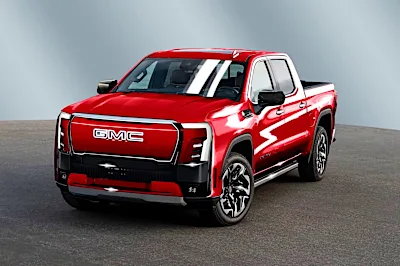
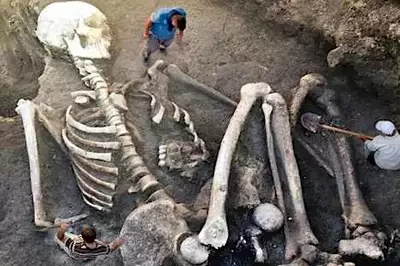
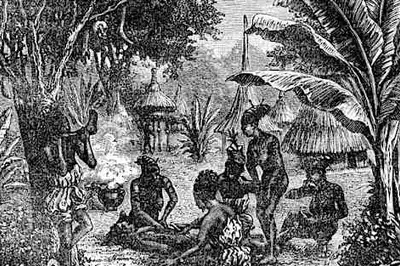
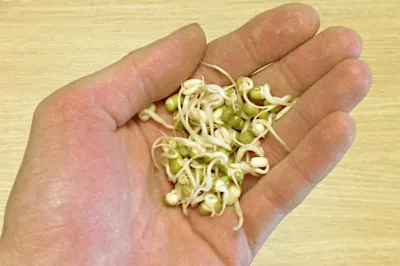

![Men with ED: Eat 1 Teaspoon Every Day, See What Happens A Week Later [Video] Men with ED: Eat 1 Teaspoon Every Day, See What Happens A Week Later [Video]](https://images.outbrainimg.com/transform/v3/eyJpdSI6ImMwZTQ3NGNkNGMxMmViMWUyMWRmYjg2YTM1MDZhYzljZGI1Mzg3NmUxNDc5NzRiYWUzOTIwODMzOGM4MTViNjgiLCJ3Ijo0MDAsImgiOjI2NiwiZCI6MS4wLCJjcyI6MCwiZiI6NH0.webp)

![[Pics] That's Why This Got Banned All Over The World [Pics] That's Why This Got Banned All Over The World](https://images.outbrainimg.com/transform/v3/eyJpdSI6ImUyYzQ0NGZjOTlhNzdhZDVlMTQ5N2JiNWY5ZjlhNTljMDdhODRkNjVlYmNkNTQwMWU5YmYzOGZkNGE5ZjhiMDgiLCJ3Ijo0MDAsImgiOjI2NiwiZCI6MS4wLCJjcyI6MCwiZiI6NH0.webp)


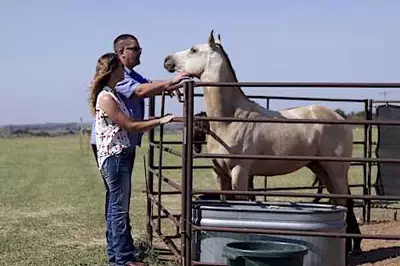
![[Photos] They're Closing Forever Every Single Spot Closing This Year [Photos] They're Closing Forever Every Single Spot Closing This Year](https://images.outbrainimg.com/transform/v3/eyJpdSI6ImNjZTIyOWU4MGMxZDc0ZGIzODYxOGU2MTkzYzllYzNiOTI0NTAwZTZlMGI3YjBiODQ3YWZjM2E2N2VmZDZhYTQiLCJ3Ijo0MDAsImgiOjI2NiwiZCI6MS4wLCJjcyI6MCwiZiI6NH0.webp)
